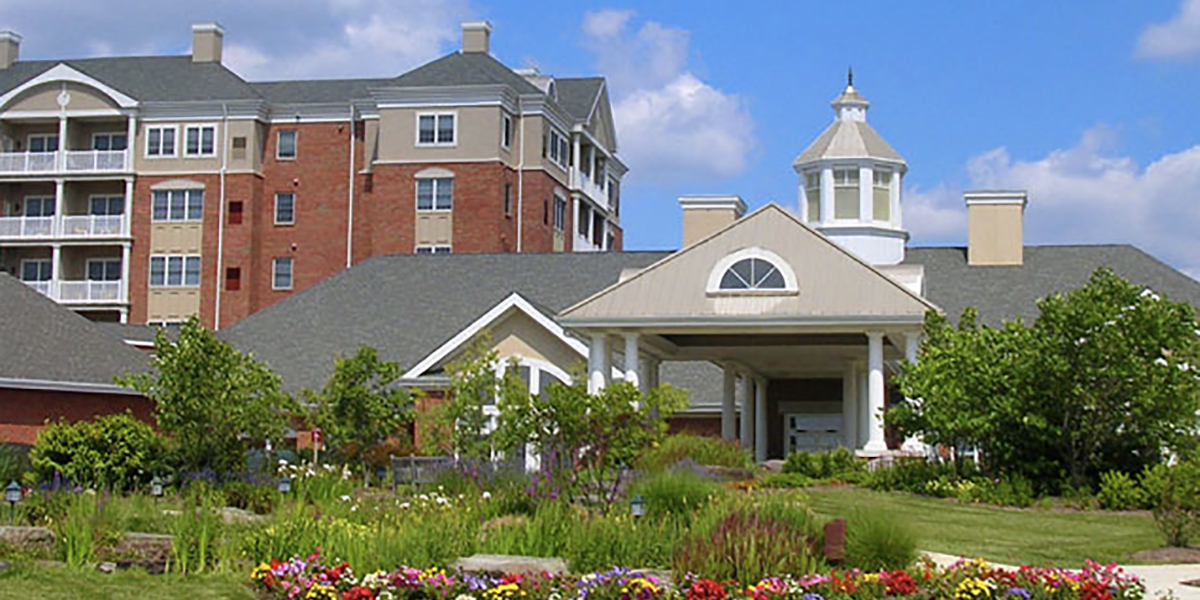Residents at Mercy Ridge Retirement Community are now better connected and more aware than ever.
The Power of Touch
When the cable TV goes out at Mercy Ridge Retirement Community, a continuing care retirement community nestled in the rolling hills of Maryland’s hunt country, residents don’t need to call the front desk to find out when it will be restored. They get a universal message delivered directly to an in-room portal. When the all-important daily mail delivery happens, they get word just as quickly. And in the case of an emergency, staff members are able to communicate almost instantaneously with a select group of residents, or all 500 living on campus — whatever is desired.
Mercy Ridge relies on CATIE, short for communication and access to information everywhere, as its go-to message relay system. But CATIE, developed by Ohio based Status Solutions, is much more than just a communication tool. The platform is an easy, user-friendly way for senior living communities to improve efficiency, cut down on waste and improve resident satisfaction.
“You can really customize what you offer on CATIE,” said Sara Wyatt, director of resident services for Mercy Ridge Retirement Community. “It’s really a great reference guide for residents, and it makes information more accessible for everyone.” Like an electronic message board and concierge-in-one, CATIE’s self-service features can include a point-of-sale system, reservation and appointment applications; and property, energy and content management systems. It can also improve engagement by allowing residents to communicate with each other, with staff and with loved ones who live off campus.
Mike MacLeod, founder and lead strategist for Status Solutions, first came up with the idea for CATIE when his daughter traveled to Europe and wanted to share photos from the trip with her grandparents. He set to work on software that could make it easier to promote connections among the residents living in his clients’ communities, whether they wanted to meet friends in a specific dining room or email their children each day without having to ask staff for help. He recognized that too many seniors live in isolation and many needlessly struggle with modern communication devices — including small cellphones and keyboard controls — favored by younger generations. The touchscreen revolution made it all possible. “Touchscreen and voice activation were the keys,” MacLeod said. “So we embedded those kinds of capabilities into a platform. They can read, hear, see and do. It’s all accessible.”
Launched in 2008, CATIE predates the iPad. Status Solutions has partnered with Apple and continues to add capabilities as technology evolves. Communities decide just how many features they want to use, either locking devices down so that content is controlled by Status Solutions’ mobile device management system or allowing users to access web-based content such as photo galleries, Netflix and more. Some can check movie descriptions for inhouse showings or easily order pizza or ower deliveries from nearby businesses. “All of our features come from customers who tell us, ‘This is the way we want to do this,’ ” MacLeod said. “Our business model is very collaborative. The innovation is never over. It’s just getting started.”
CATIE has thousands of users across the U.S., with the largest roll out to date at a 600-unit continuing care retirement community in central Pennsylvania.
“With one touch they can do everything. It makes technology so much less intimidating.”
Sara Wyatt, Director of Resident Services, Mercy Ridge Retirement Community
Once Touch at a Time
How they use the platform may differ, but most CATIE customers report similar efficiency gains after implementation. MacLeod says clients have reported reductions in FTEs or the ability to assign staff new tasks as CATIE frees them from time-consuming routine responsibilities.
Residents typically use the system to check in each day, pressing a single button between set hours to indicate that they are up and in good health. Then they can check the daily schedule for activities and outings. At Mercy Ridge, CATIE helps Wyatt send reminder messages about upcoming trips and ask for RSVPs. Residents who want to decline can do so immediately, allowing her to reach out to others who may be on a waitlist. Options relating to dining are a particularly popular asset. Presenting menus and allowing pre-orders reduces waste in the kitchen, and it can allow a chef to make last-minute changes if fresh seafood or produce becomes available. Mercy Ridge also gave its physical therapy provider access to the system, allowing for patient reminders and reducing unexpected no-shows. “It has definitely made things more efficient and improved work flow,” Wyatt said.
Next up, she hopes CATIE will allow her community to start reducing its paper use by reducing reliance on community directories and newsletters for information that changes quickly anyway. Status Solutions works with each community to help select the right network, install the hardware needed to boost signals to hard-to-reach areas and make sure the system is secure. “We take on the heavy lifting and figure things out,” MacLeod said. Rooms also must be fitted for an iPad mount, with the expectation that the device will always be powered for emergency messaging purposes.
All Systems Go
Once the system is in place, Status Solutions delivers training and support for clients and community users. At Mercy Ridge Retirement Community, CATIE lessons begin with simple coaching, where residents can learn how to check the day’s weather or that all important dinner menu.
“We call it the ecosystem of mutual benefit,” MacLeod said. “Everybody gets something out of it.”
At Mercy Ridge, residents can bring CATIE, housed in a light, magnetic base, with them to group sessions. The community has several easy-to-use customized buttons, including icons for a weekly newsletter listing community happenings. CATIE is helping residents feel more at ease, and more at home, every day. “With one touch, they can do everything,” Wyatt said. “It makes technology so much less intimidating.”

